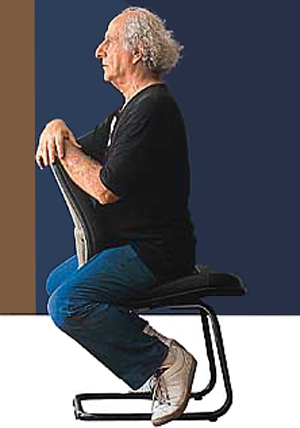|
Eduardo Sued (Rio de Janeiro, 1925). Painter, engraver and draughtsman.
Before deciding on an artistic career, Eduardo Sued attended the National School of Engineering in Rio de Janeiro from 1946-1948. In 1949, he began his training as an artist at an open course in painting and drawing given by the German painter, Henrique Boese (1897 - 1982). From 1950-1951, he worked as an architectural draughtsman in the office of Oscar Niemeyer. With the proceeds from his watercolor sales, he left for Paris in 1951, remaining there until 1953. During his stay in France, he came into direct contact with the works of the École de Paris, of Pablo Picasso (1881 - 1973), Joán Miró (1893 - 1983), Henri Matisse (1869 - 1954) and Georges Braque (1882 - 1963). He was also a pupil at the Académie Julian and the Académie de La Grande Chaumière, which, more than schools, were places where students expressed themselves freely through drawing and painting. After returning to Brazil, he began a course in metal engraving with Iberê Camargo (1914 - 1994), later becoming his studio assistant. On this contact, Sued noted: "Iberê was a serious, dedicated artist, a model for me".
During this period, Sued produced an important series of engravings and participated in exhibitions such as the Latin American Engraving Biennial of San Juan (1970) and the International Engraving Biennial (1970) in Poland. In 1956, he began a career as a lecturer in drawing, painting and metal engraving, abandoning this activity in 1980. His interest in large chromatic areas and his search for a greater degree of plasticity led him in the mid-1960s to devote himself ever more exclusively to painting.
Sued believes in painting as an intellectual, solitary and meditative activity. For this reason, the artist, described by the critic, Ronaldo Brito, as "the great disinhibitor of abstract languages of constructivist origin in modern Brazilian painting" Sued did not participate actively in any movement, avoiding both the polemics between Concretists and Neoconcretists in the 1950s and the discussions of the 1960s on the new figuration. His abstract poetics formed gradually, in a constant and meditated dialogue with the tradition of modern Brazilian and international painting. After a short period of figurative production, Sued achieved a sure mastery by the early 1970s of the constructivist language as a result of his reflection on Piet Mondrian (1872 - 1944) and the Bauhaus. Having said this, his was an updated Constructivism rather than the immediate application of the postulates of early 20th century artists. On the other hand, within a Brazilian context, Sued concerned himself with expanding "Brazilian constructivist painting without losing the productive conflict introduced by the Neoconcretists", as the critic, Paulo Sérgio Duarte, has observed.
It is usual to point to the conquest of a public dimension as Sued`s greatest contribution to Brazilian painting. In his works, he succeeds in overcoming the intimate character that permeates the work of some of Brazil`s best modern painters, such as Alfredo Volpi (1896 - 1988) and Milton Dacosta (1915 - 1988). Sued breaks with the local color of figurative vestiges, with the reminiscent and personal mood which marks the use of geometric elements by these artists. In canvases that are of "monumental dimensions" by the historical standards of Brazilian art, he projects the pictorial space outwards through the precise, rigorous and "impersonal" structuring of the surface of the canvas in varying colour fields. This movement to the outside occurs both in enormous painting-panels that are almost monochromatic and in works that invest in the vibrant tension between various chromatic fields arranged according to a geometry that lies "off the axes", creating a frenetic rhythm, to which the plane surface appears to pulsate.
It may be noted that in over three decades of production, Sued has not crystalized his abstract language into preconceived structures. For him, "to experiment is to accept the challenge of doubt. I`m a painter, as long as I`m an artist who experiments". This exercise is expressed in a trajectory that constantly reinvents its challenges and solutions. Most notable in this set of works are the canvases, developed since the 1980s, with huge grey or black areas, that intermingle in a precise way with colored strips, in a sober but vibrant play of expansion and containment. In the mid-1990s, Sued introduced new elements into his work, such as aluminium paint and thick, discontinuous brushstrokes that gave the surface an "almost sculpted" appearance. He also returned to collage, which appeared in his works during the 1960s and 70s. These compositions present an accurate meditation on the relationships between light, surface, space and time in painting, once again reaffirming the position of the artist as a constant "disinhibitor" in Brazilian art.
Sued lives and works in Rio de Janeiro.
Selected Group Exhibition
1970 - Krakow (Poland) - 3rd International Print Biennial
1970 - San Juan (Puerto Rico) - Biennial of San Juan del Grabado Latinoamericana y del Caribe
1981 - Sao Paulo SP - 16th International Biennial of Sao Paulo Biennale Foundation
1984 - Sao Paulo SP - Tradition and Rupture : synthesis of Brazilian art and culture , at the Biennial Foundation
1984 - Venice (Italy) - 41st Venice Biennale
1987 - Sao Paulo SP - 19th International Biennial of Sao Paulo Biennale Foundation
1989 - Sao Paulo SP - 20th International Biennial of Sao Paulo Biennale Foundation
1994 - Sao Paulo SP - Brazil Biennial twentieth century in the Biennial Foundation
2000 - Sao Paulo SP - Brazil + 500 Rediscovery, the Biennial Foundation
|
|

Works:
|
